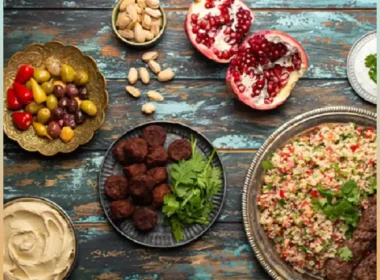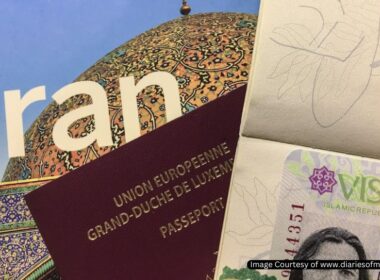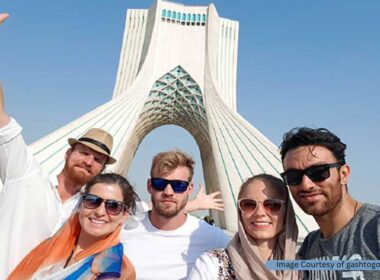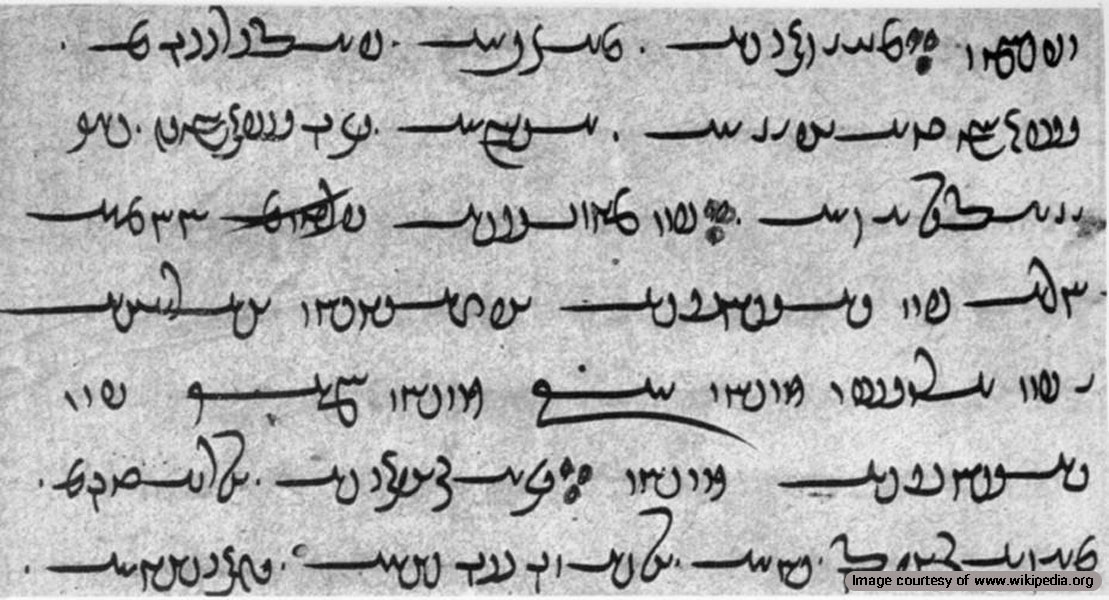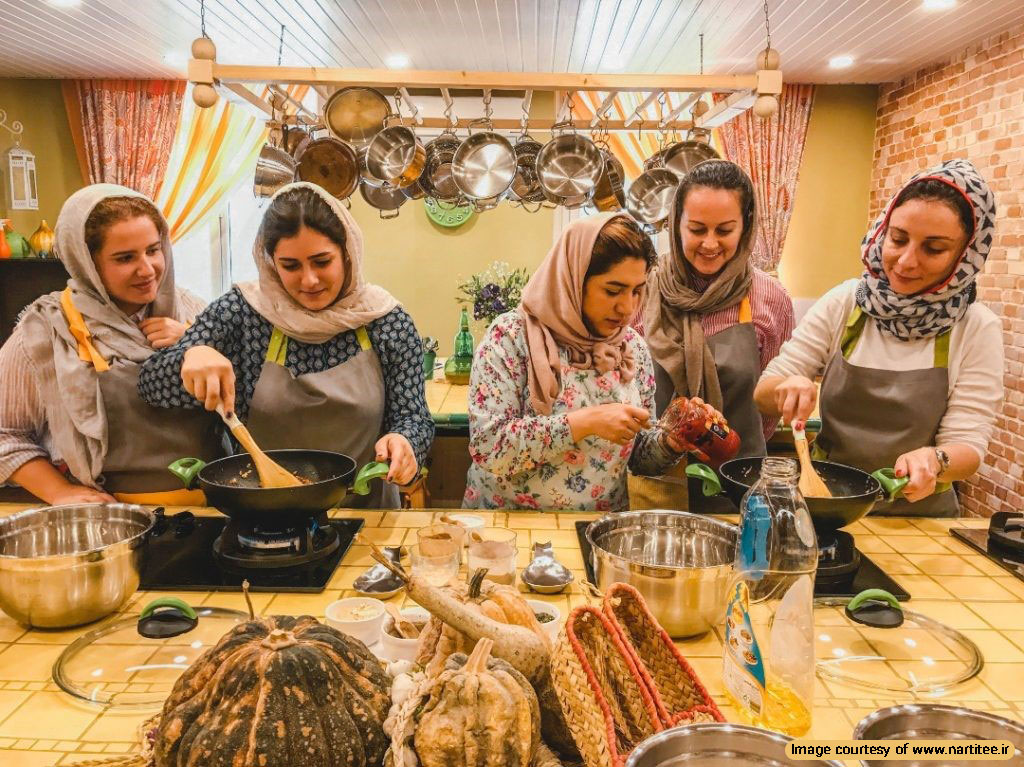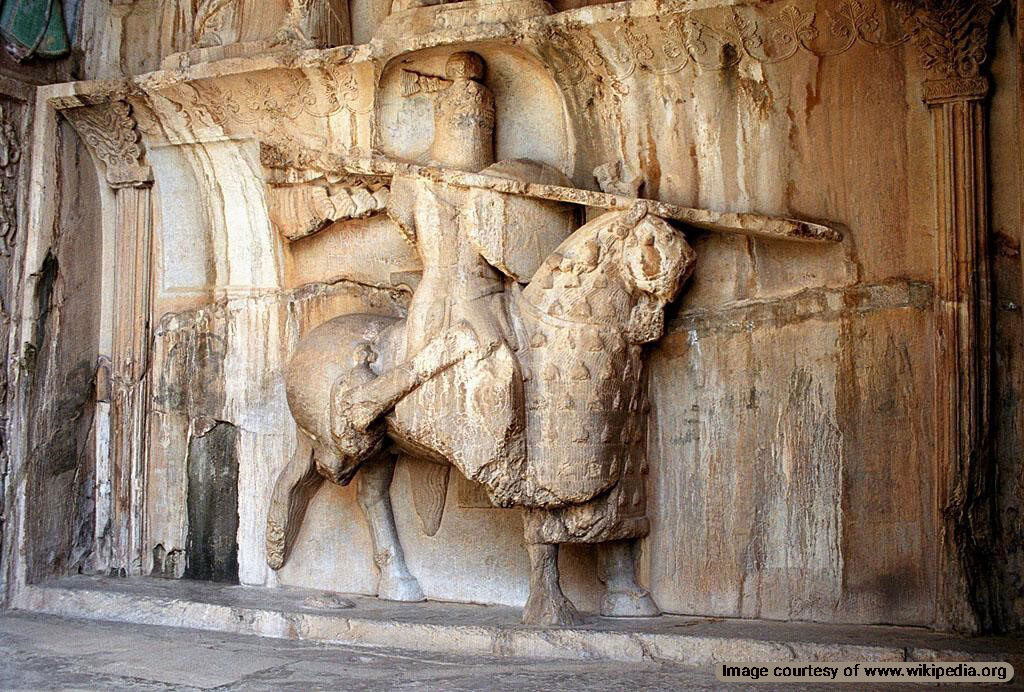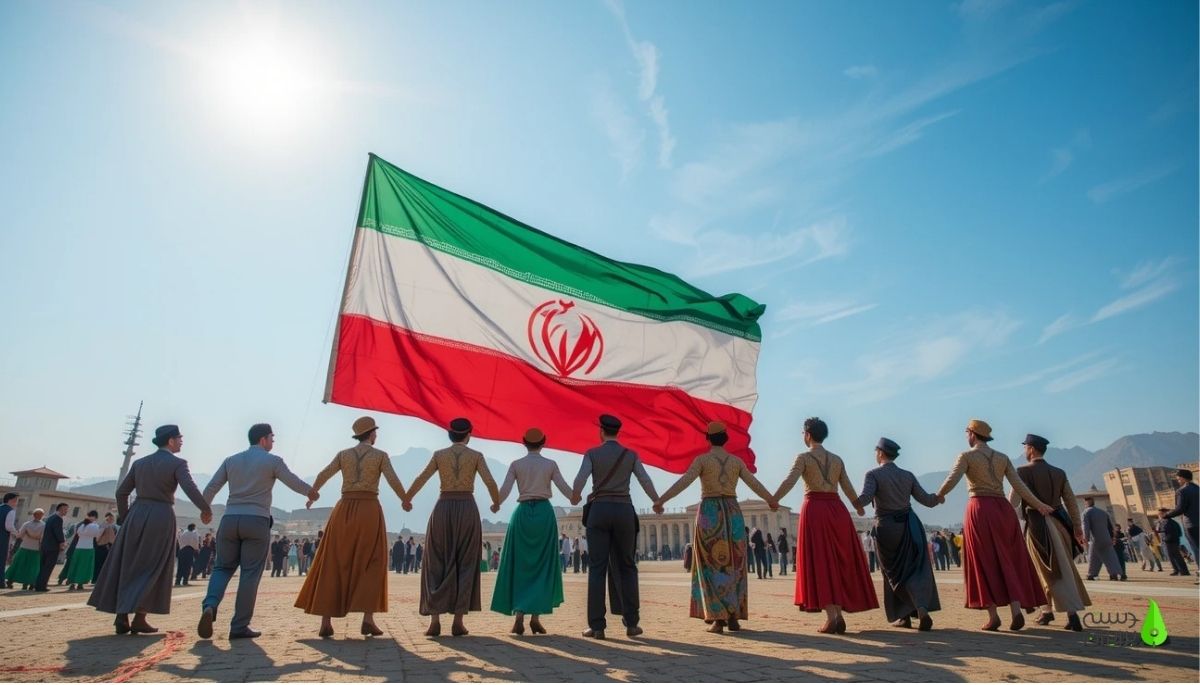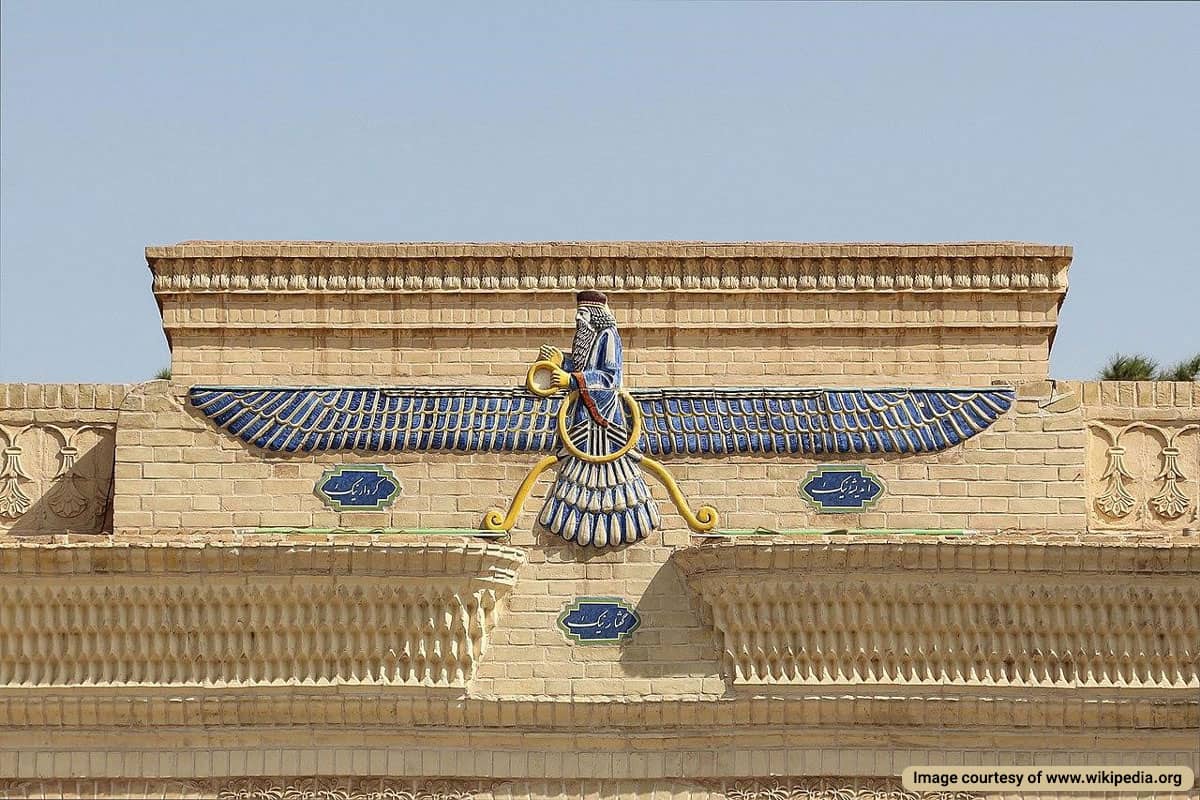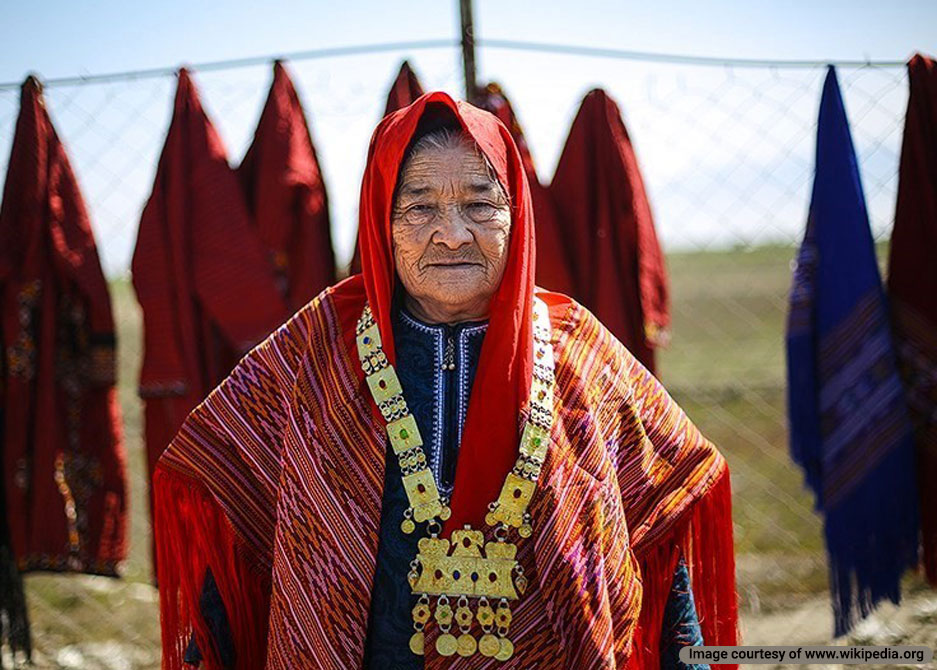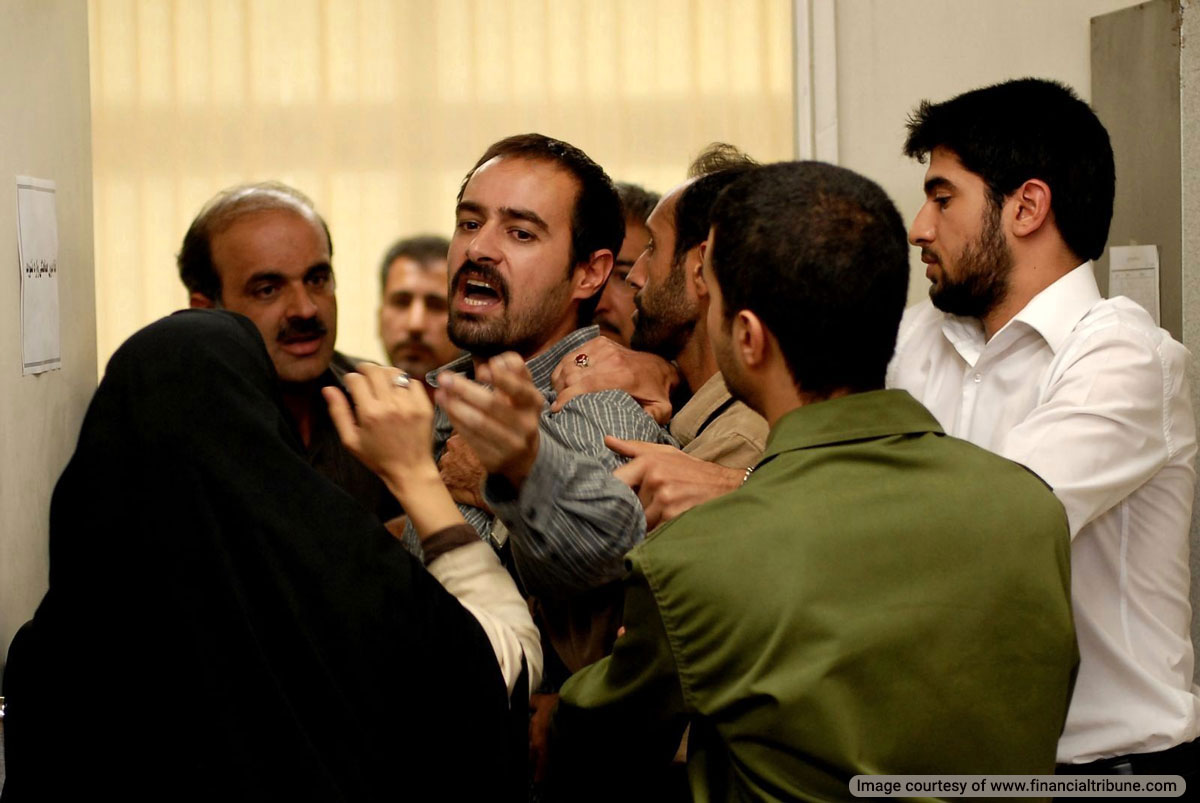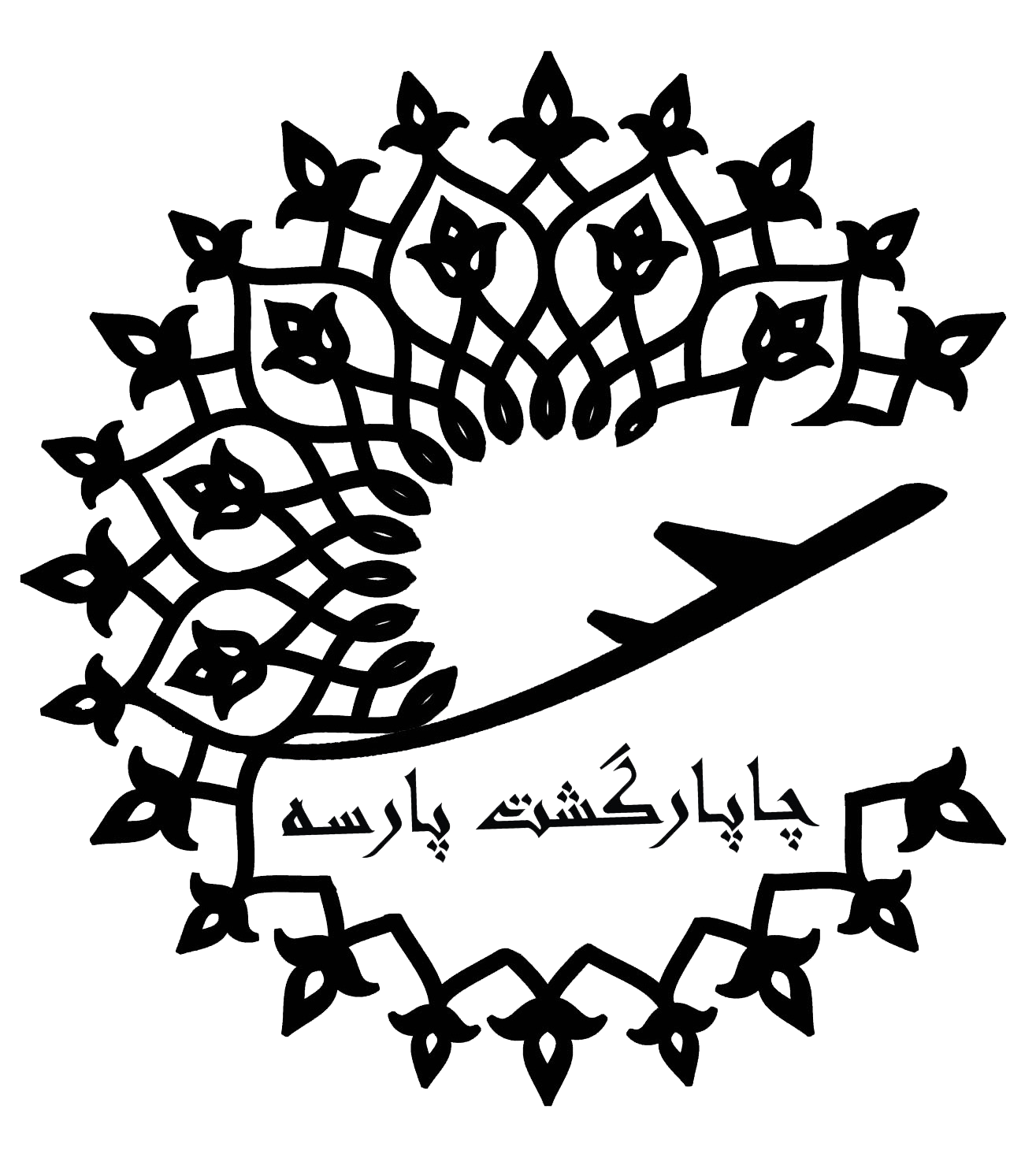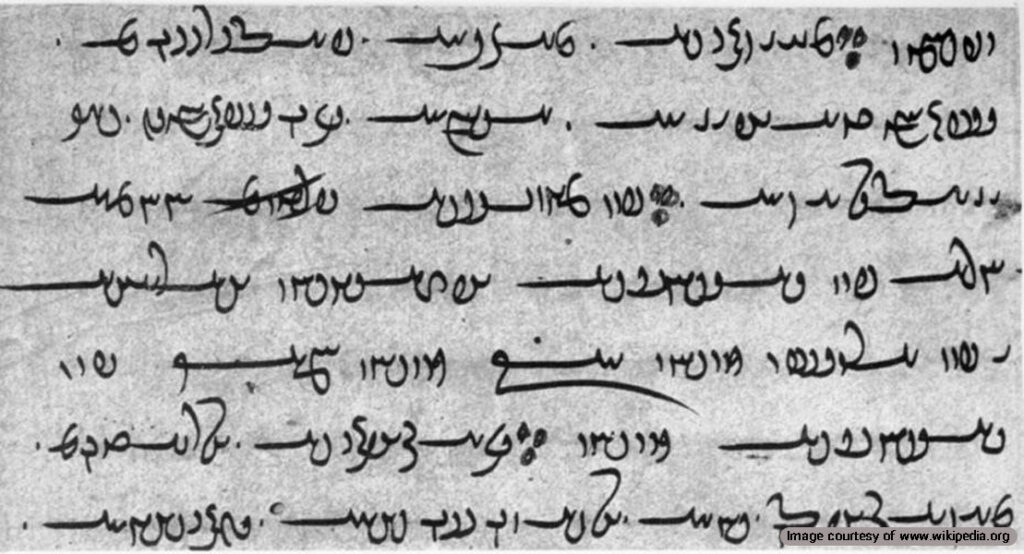
Persian poetry is one of the greatest cultural products of the Iranian national identity. Its undeniable role in preserving the Persian language after the Arab conquest of Iran through the efforts of literary geniuses such as Ferdowsi, Saadi, and Rumi, makes it an integral part of Iranian culture as a whole.
The Origins of Persian Poetry
Persian literature has its roots in a long oral tradition of poetic storytelling, with the earliest recorded example being the Behistun Inscription of Darius I (c. 522 BCE) during the Achaemenid Empire (c. 550-330 BCE). Despite the loss of many early works following Alexander the Great’s conquest in 330 BCE, the oral tradition persisted and reached its zenith in the Middle Ages (476-1500 CE) with influential poets such as Rudaki, Ferdowsi, and Rumi.
Classical Persian poets sought to extend the tradition of Arabic poetry into their language, adhering to the rules of Arabic prosody to be considered serious poets. This practice marked a significant departure from pre-Islamic Iranian poetry, which was primarily oral and scarcely recorded. The transcription of poetry, guided by principles developed in Arabic philology, distinguished classical Persian poetry from its predecessors.
Classical Persian poetry, characterized by its beauty, mysticism, and philosophical depth, has played a crucial role in shaping the cultural landscape of Iran and beyond. Spanning over two-and-a-half millennia, Persian literature encompasses regions where the Persian language has been historically prominent, including present-day Iran, Iraq, Afghanistan, and parts of Central Asia, South Asia, and the Balkans.
The rise of the Sassanian Empire (224-651 CE) and the Abbasid Dynasty (c. 750 CE) were pivotal periods that saw the preservation and transcription of ancient Persian tales and religious texts like the Avesta.
This is an example of early Persia Poetry, believed to be written by Zoroaster:
Lead us to pure thought and truth
by your sacred word and long-enduring assistance,
O, eternal Giver of the gifts of righteousness.
O, wise Lord, grant us spiritual strength and joy;
help us overcome our enemies’ enmity.
Persian Poetry During the Islamic Golden Age
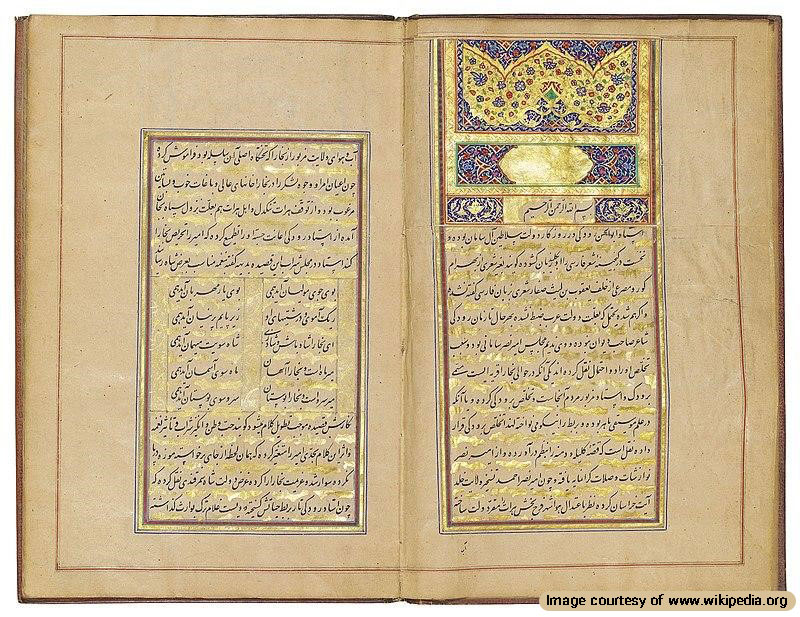
The classical Persian poets and theoreticians saw the aim of their art primarily as the continuation of Arabic poetry in another language. For them, poems that were not written according to the rules of Arabic prosody did not count as serious poetry. The introduction of Arabic prosody into Persian poetry was a significant transformation during the Islamic Golden Age. This integration influenced not only the structural aspects of Persian poetry but also its thematic and stylistic elements. It marked the transition from oral Middle Persian poetry to written forms based on Arabic philological principles, thus enriching the literary tradition with new complexities and depths.
Classical Persian poetry stands as a testament to the enduring power of language and imagination, weaving together threads of beauty, mysticism, and philosophical depth to create a rich tapestry of literary expression. Spanning over a millennium of cultural and literary evolution, Persian poetry captivated the hearts and minds of readers around the world with its lyrical verses, intricate imagery, and profound insights into the human condition.
This period of Persian literature is notable for its origins, themes, and artistic innovations, which have left an enduring legacy in shaping the cultural landscape of Iran and beyond.
Examples of Classical Persian Poetry
There are millions of couplets in the extensive library of Persian Poetry that have survived the ages. Below are a handful, which represent the main themes used by classical Persian poets.
Rumi
Rumi, a 13th-century poet, is known for his mystical and spiritual poetry. One of his famous poems, “This Marriage,” captures the essence of spiritual union:
This Marriage is no worldly affair/ Still it’s full of joy.
This Marriage is no physical incarnation/ Still it has its fruitful consummation.
Ferdowsi
Ferdowsi’s “Shahnameh” (Book of Kings) is an epic poem that preserves Persian history and mythology. Here’s an excerpt from the beginning:
In the beginning, God created Kings / Then, to protect those kings, He brought forth His champions
He gave them swords and placed crowns upon their heads / So they would victoriously rule over the world.
Omar Khayyam
Omar Khayyam is known for his philosophical and enigmatic poetry, often found in his collection, the Rubaiyat:
The Moving Finger writes; and, having writ, / Moves on: nor all thy Piety nor Wit / Shall lure it
Influence of Classical Persian Poets
Classical Persian poets such as Rumi and Hafez have left an indelible mark on the literary and cultural landscape of Persia, influencing not only their contemporaries but also modern Persian poets and writers. Hafez, for instance, is considered one of the greatest Persian poets and is widely regarded as a pinnacle of Persian literary achievement. His profound impact is seen in the thematic and stylistic choices of contemporary Persian literature, where his works continue to resonate with modern audiences.
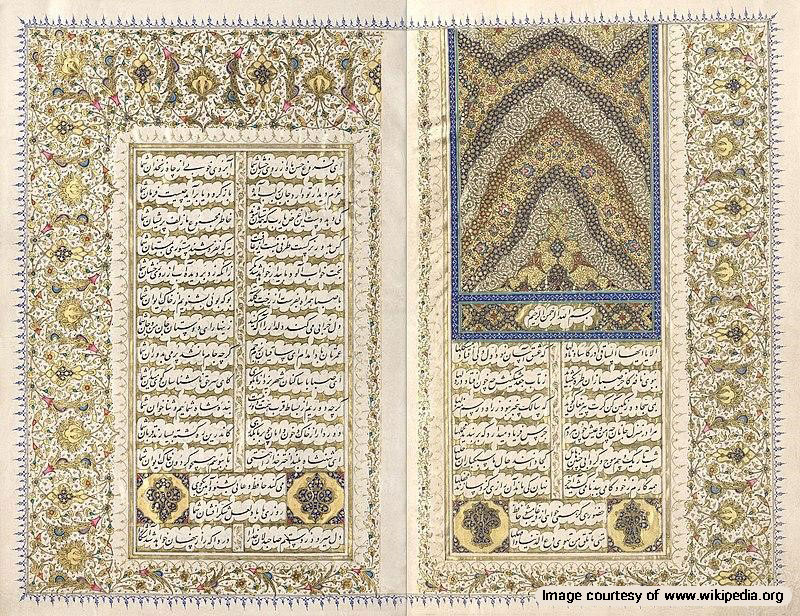
Hafez’s poetry, characterized by its use of symbolism and metaphors, has significantly contributed to the development of Persian literary traditions. His ghazals often explore themes of love, spirituality, and the human connection to the divine,transcending time and geography. Hafez’s ability to intertwine personal and political elements in his poetry, influenced by the turbulent political climate of his time offers a compelling narrative that has influenced Persian writers through the centuries.
His memorization of the Quran and the works of other prominent Persian poets like Rumi, Sanai, Attar, Saadi, and Nizami, allowed him to create a rich tapestry of poetic expressions that continue to inspire. The profound admiration for his work is evident in the fact that many Persian-speaking households own this collected works, often learning his poems by heart and using them as everyday proverbs and sayings.
The annual celebration of National Hafez Day in Iran underscores his enduring influence, as his poetry remains a significant part of Iranian culture and Sufism. His work not only shapes literary pursuits but also enriches the cultural and spiritual life of Iranians. Thus, the legacy of classical poets like Hafez is deeply embedded in the fabric of Persian poetry, providing a foundation upon which modern literary creations are built.
Oral and Written Traditions of Persian Poetry
Persian literature has its roots in a rich oral tradition of poetic storytelling that predates the written word. The earliest recorded example of this tradition is the Behistun Inscription of Darius I, created around 522 BCE during the Achaemenid Empire. This period saw the beginnings of what would later evolve into a more formalized body of Persian literature, although many works from this era were lost following the fall of the Achaemenid Empire to Alexander the Great in 330 BCE.
Persian Poetry in the Sassanid Era and After
During the Sassanian Empire (224-651 CE), efforts were made to preserve these oral traditions through writing. A notable example is the Avesta, the Zoroastrian sacred texts, which were committed to writing under the reign of Shapur I (240-270 CE). This period marks an important phase in the recording of ancient narratives, which were later preserved and celebrated in works like Ferdowsi’s Shahnameh, composed in the early 11 century CE. Ferdowsi’s monumental poem narrates the genesis of an archetypal ‘Book of Kings,’ a collection of ancient stories that had been dispersed among wise men and eventually gathered into a coherent narrative.
With the advent of Islam in the 7th century, Persian literature underwent a renaissance, as poets and scholars began to explore new themes and forms influenced by Islamic culture and theology. This period marked the flourishing of Persian poetry, which evolved in response to the dynamic socio-political landscape of the Persian-speaking world. Thus, the deep-seated oral traditions of ancient Persia played a crucial role in shaping the rich tapestry of Persian-written poetry that continues to captivate readers to this day.
Despite the losses inflicted by the Arab invasion, the oral tradition persisted and reached its zenith with the medieval Persian poets, such as Ferdowsi, Rumi, and Hafez Shirazi, among others. The transition from oral to written literature was significantly influenced by Arabic philology. The classical Persian poets viewed their craft as a continuation of Arabic poetry, adhering strictly to its prosodic rules. This adherence introduced a new dimension to Persian poetry, setting it apart from the earlier oral Middle Persian poetry, which remains less well-documented.
Literary Patronage in Persian Courts
The literary patronage of Persian courts played a pivotal role in the development and flourishing of Persian poetry during the Islamic Golden Age. From the 9th to the 14th century, this era witnessed an extraordinary surge in poetic creativity, where poets gained prominence through the intricate and profound expressions of their art.
Courts were central to the production, performance, and evaluation of literature, with patrons vying for prestige by attracting literary figures to their courts. These patrons provided financial support and created an environment where poets could thrive. The most successful courts managed to assemble outstanding literary talents from across the region, fostering a rich and competitive literary culture.
The Outcome of Literary Patronage
A notable example of such patronage was the court of Mahmud of Ghazna, which became a significant hub for Persian poets. Renowned poets like Unsuri, Farrukhi, Manuchihri, Asadi, and Firdausi were associated with Mahmud’s court. These poets produced Diwans—collections of poetry that included qasidas, which are long poems dealing with pre-established themes such as spring or long-lost loves. Asadi, in particular, was a pioneer of the Munazara genre, which involved staged disputations between opposing characters or concepts.
Ferdowsi’s magnum opus, the Shahnameh, epitomizes the impact of such patronage. This monumental work, which celebrates the mythic pre-Islamic history of Iran, attempted to exclude Arabic expressions, reinforcing a distinct Persian literary identity. Firdausi’s contribution is often likened to the roles of Goethe, Pushkin, and Shakespeare in their respective literary traditions.
The patronage system not only provided poets with the necessary financial support but also created a competitive and intellectually stimulating environment that was essential for their artistic development. The presence of poets in these courts allowed for a cross-pollination of ideas and styles, which contributed to the rich tapestry of classical Persian poetry and its enduring legacy.
This system of patronage thus played an influential role in shaping the cultural and literary landscape of the Islamic world and beyond.
Forms of Classical Persian Poetry
Persian poetry is renowned for its rich history, intricate forms, and profound themes. It has evolved through various periods, reflecting the cultural, philosophical, and spiritual currents of Iranian society. Here are some key forms of Persian poetry:
Ghazal
The ghazal is one of the most celebrated forms of Persian poetry. It consists of a series of couplets (shers), typically ranging from five to fifteen, which may stand alone but are thematically linked. The structure often features a refrain (radif) and a rhyme scheme (qafia). Ghazals traditionally express themes of love, loss, beauty, and mysticism, and they often utilize symbolic language.
Qasida
The qasida is a lengthy, lyrical poem often composed to praise a person or express profound themes such as love, loss, or philosophical ideas. It may include a variety of subjects and is typically structured in a single rhyme scheme throughout.
Rubai
The rubaiyat is a quatrain (four-line stanza) that follows an AABA rhyme scheme. This form is famous for its philosophical reflections, particularly in the works of Omar Khayyam. Rubaiyat explore themes such as existence, fate, and the nature of love, often offering a sense of melancholy or existential contemplation.
The masnavi is a narrative poem characterized by its rhymed couplets. It typically focuses on storytelling, often exploring ethical, moral, and spiritual themes. The most famous example is Rumi’s “Masnavi-ye-Ma’navi,” which is a vast work that delves into the depths of Sufi mysticism.
Modern Persian Poetry (New Poetry)
Modern Persian poets have creatively incorporated traditional Persian poetic forms and themes into their works while simultaneously bringing significant innovations. One of the most pivotal figures in this transformation is Nima Yooshij, often hailed as the father of modern Persian poetry.
Born in 1895 in the small village of Yush in northern Iran, Yooshij revolutionized Iranian literature with his innovative style, known as “She’r-e No” or “New Poetry”. Breaking away from the rigid classical structure of Persian verse, Yooshij introduced free verse, which allowed for greater flexibility and expression.
This bold departure from tradition inspired a generation of poets to explore new themes and forms, effectively reshaping Persian poetry and laying the foundation for modern literary movements in Iran. Yooshij’s contributions remain influential, cementing his legacy as one of the most significant figures in Persian Literature.
Innovations in Contemporary Persian Poetry
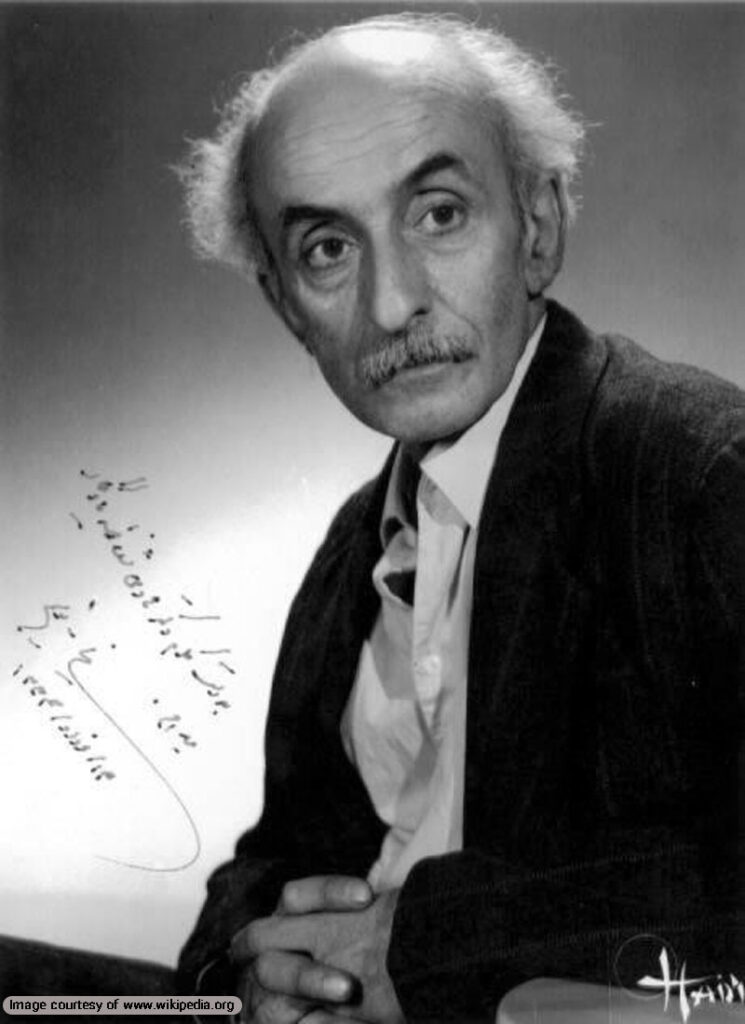
Contemporary Persian poetry has seen a significant transformation beginning in the 1990s, marked by the emergence of a new generation of poets. This cohort of poets has advanced Persian poetry by self-referentially experimenting with both original and traditional forms and ideas, while their writings often draw from the pioneering works of modernist Iranian poets .
One of the notable figures in this evolution is Mohammad Moqaddam, an experimentalist poet known for introducing prose poetry into modern Persian literature. Moqaddam’s innovative contributions include exploring unconventional rhythmic systems and engaging deeply with American free verse, particularly inspired by Walt Whitman. His prose poems reflect a distinctive approach to Persian versification, illustrating a significant shift in the tradition.
Influence of Classical Persian Poetry on Contemporary Artists
Moreover, the ongoing popularity of classical Persian poets such as Hafez, Rumi, and Ferdowsi underscores the continuity within the literary tradition, even as contemporary poets introduce innovative elements. These classical works continue to influence modern poets, ensuring that the poetic heritage remains a foundational element of contemporary literary creativity.
The broader trends in contemporary Persian poetry also reflect major societal concerns and preoccupations, spanning both pre-and post-Islamic Revolution eras. This dual focus on continuity and change illustrates how modern poets are both preserving and transforming the tradition to address contemporary issues.
Here is an example of Ahmad Shamlou’s poem “The Moon’s Night”:
Good night to you,
In your caves,
I love youIn the midnight,
When the world has fallen silent.
Furthermore, the fluctuations between objective social perspectives and personal subjectivism highlight the dynamic nature of contemporary Persian poetry. Poets have broken away from traditional language structures to convey their perspectives on social transformations and personal expressions, thereby expanding the scope of poetic creativity.
Global Representation of New Persian Poetry
This blend of objectivism and subjectivism has resulted in a rich tapestry of poetic forms and themes that continue to evolve despite the robust innovation within the Persian literary tradition, modern Persian poetry remains underrepresented in global literary anthologies and surveys. Unlike classical figures such as Khayyam, Rumi, and Hafez, modern Persian poets are notably absent from key collections like the Norton Anthology of World Literature and the Encyclopedia of Literary Translation into English. This absence highlights a gap in the recognition and dissemination of contemporary Persian literary achievements on the world stage.


